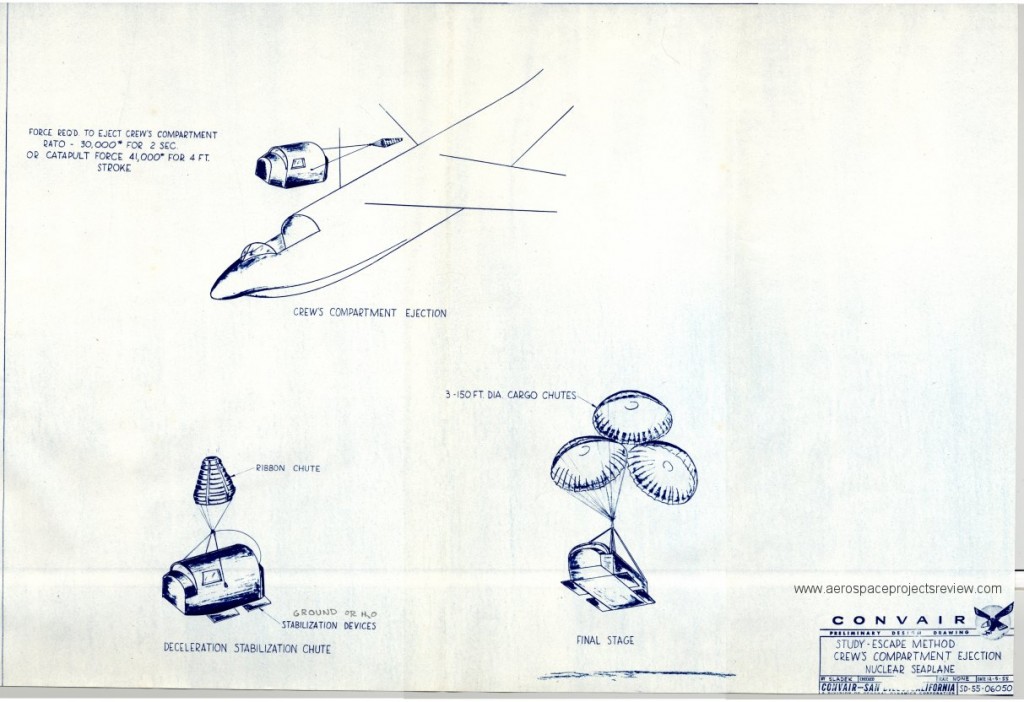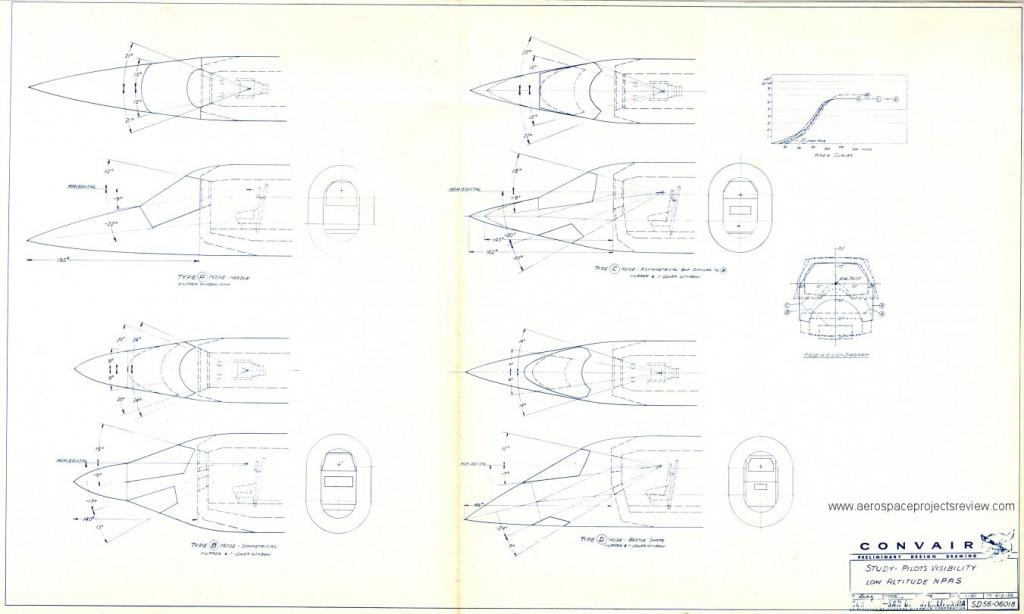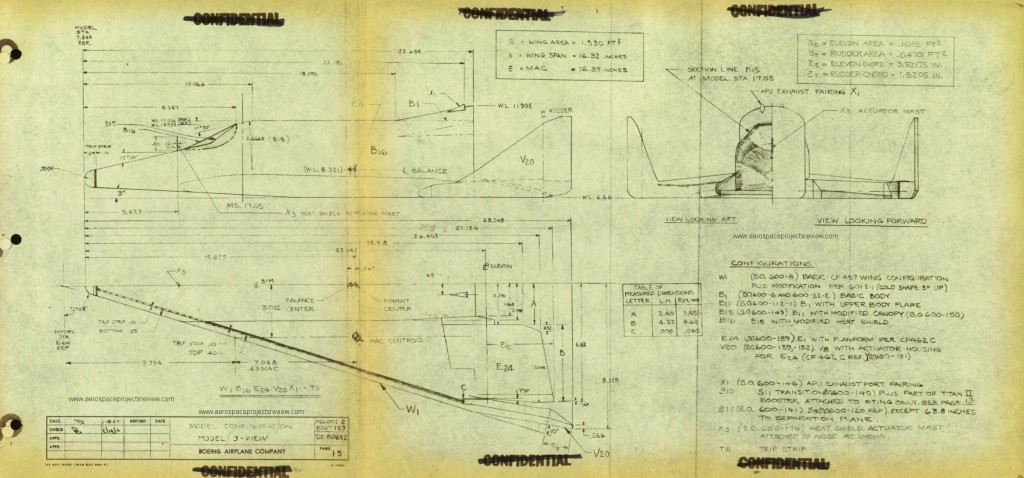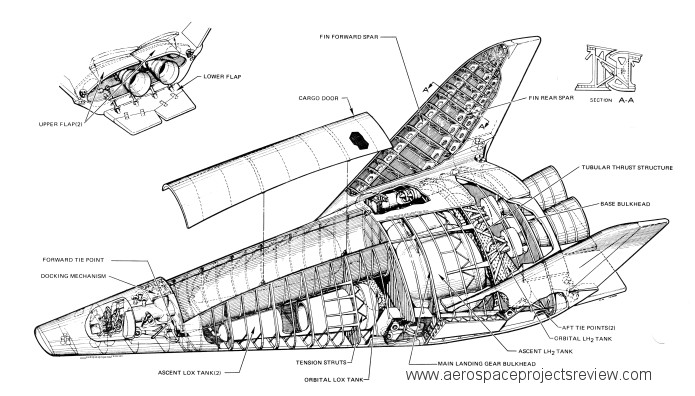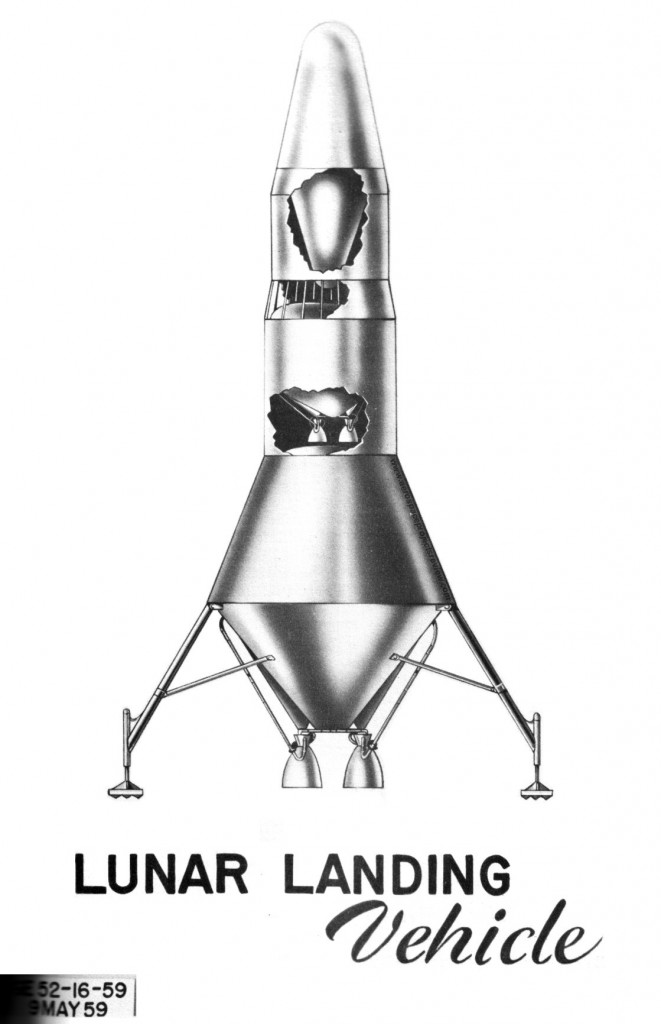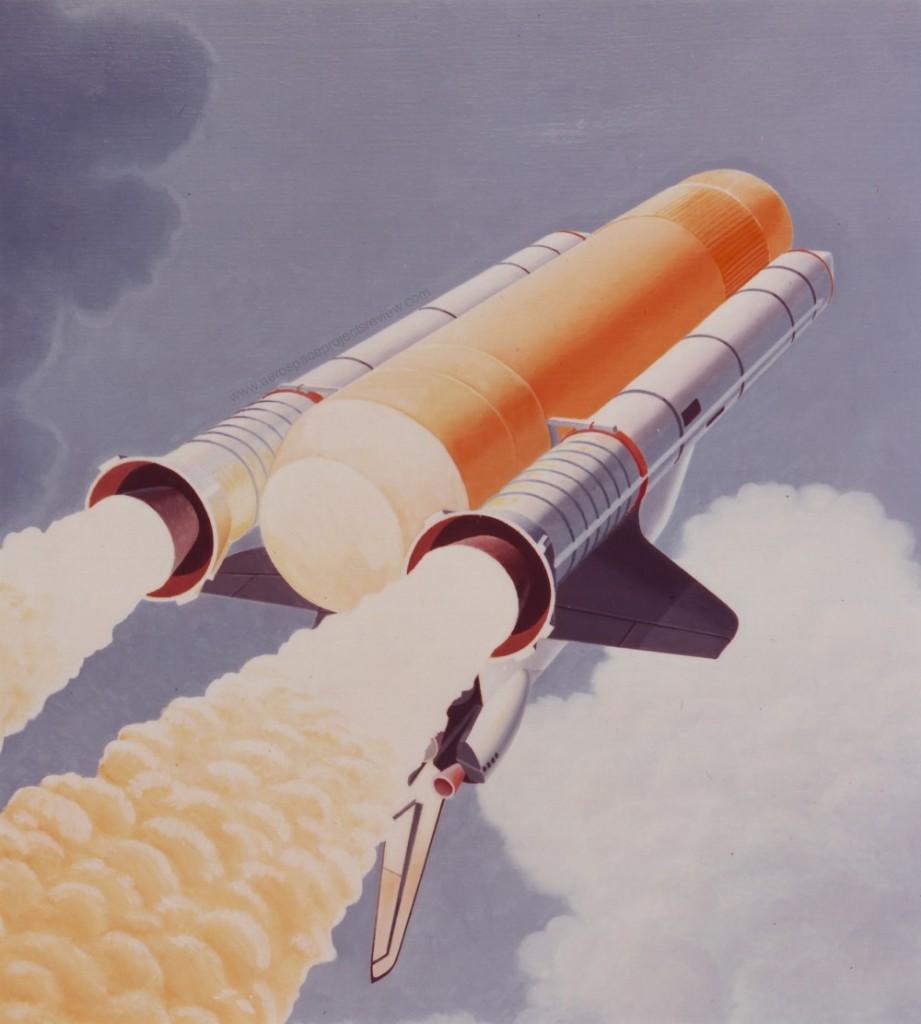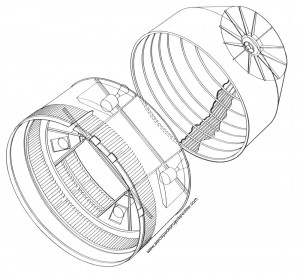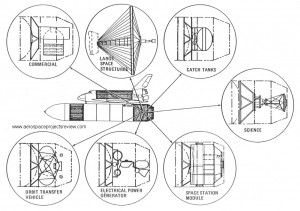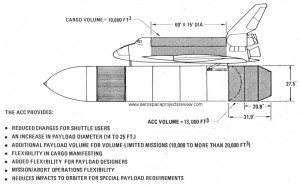Because eventually your supersonic nuclear powered seaplane is going to fail, you are going to need a way to bail out at speed and at altitude. Obviously ejector seats are out of the question… you’d get shot distressingly close to both the reactor and the radioactive exhaust. Additionally, punching a hole in the massive lead cockpit shield big enough to get an ejector seat through *without* torching the crew would be problematic at best. So, Convairs solution to the problem, as shown in this 1956 diagram, was to eject the entire cockpit as a capsule. This is similar to the method used on the F-111 and the B-1A.
Note that the three parachutes are shown hilariously out of scale.
